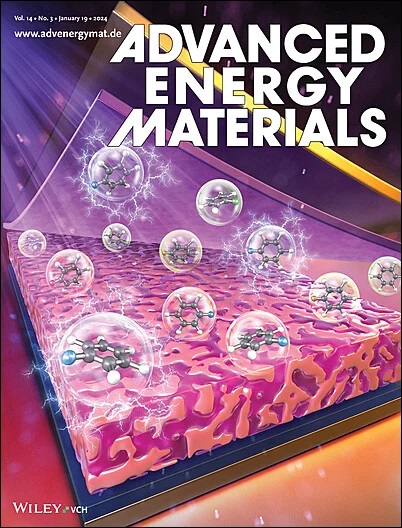Highly Stable Aqueous Zn-Ion Batteries Achieved by Suppressing the Active Component Loss in Vanadium-Based Cathode
IF 24.4
1区 材料科学
Q1 CHEMISTRY, PHYSICAL
引用次数: 0
Abstract
Aqueous zinc–ion batteries (AZIBs) hold significant promise for large-scale energy storage due to their inherent safety and environmental benefits. However, their practical application is often limited by rapid capacity loss from the dissolution of active cathode materials. Here, an effective strategy is proposed to suppress the active component loss by doping high-valence Sn4+ in V3O7·H2O (Sn–V3O7·H2O) cathode material to achieve highly stable AZIBs. An impressive capacity retention of 89.3% over 6000 cycles at 5.0 A g−1 and a high specific capacity of 408 mAh g−1 at 0.1 A g−1 are attained. The Sn4+ doping thermodynamically lowers the formation energy of Sn–V3O7·H2O and increases the dissolution energy of VO2+ ions, thereby reinforcing the structural stability and suppressing the vanadium dissolution. Besides, Sn4+ doping enhances electrical conductivity and broadens Zn2+ diffusion channels, significantly accelerating Zn2+ intercalation and deintercalation kinetics. The experimental results are integrated with mechanism analysis and density functional theory calculation to elucidate the dissolution dynamics of V-based cathodes, and employ X-ray absorption spectroscopy to reveal the local electronic structures and chemical valences of vanadium during charge/discharge processes, thereby providing comprehensive insights into high-performance cathode materials for AZIBs.

求助全文
约1分钟内获得全文
求助全文
来源期刊

Advanced Energy Materials
CHEMISTRY, PHYSICAL-ENERGY & FUELS
CiteScore
41.90
自引率
4.00%
发文量
889
审稿时长
1.4 months
期刊介绍:
Established in 2011, Advanced Energy Materials is an international, interdisciplinary, English-language journal that focuses on materials used in energy harvesting, conversion, and storage. It is regarded as a top-quality journal alongside Advanced Materials, Advanced Functional Materials, and Small.
With a 2022 Impact Factor of 27.8, Advanced Energy Materials is considered a prime source for the best energy-related research. The journal covers a wide range of topics in energy-related research, including organic and inorganic photovoltaics, batteries and supercapacitors, fuel cells, hydrogen generation and storage, thermoelectrics, water splitting and photocatalysis, solar fuels and thermosolar power, magnetocalorics, and piezoelectronics.
The readership of Advanced Energy Materials includes materials scientists, chemists, physicists, and engineers in both academia and industry. The journal is indexed in various databases and collections, such as Advanced Technologies & Aerospace Database, FIZ Karlsruhe, INSPEC (IET), Science Citation Index Expanded, Technology Collection, and Web of Science, among others.
 求助内容:
求助内容: 应助结果提醒方式:
应助结果提醒方式:


